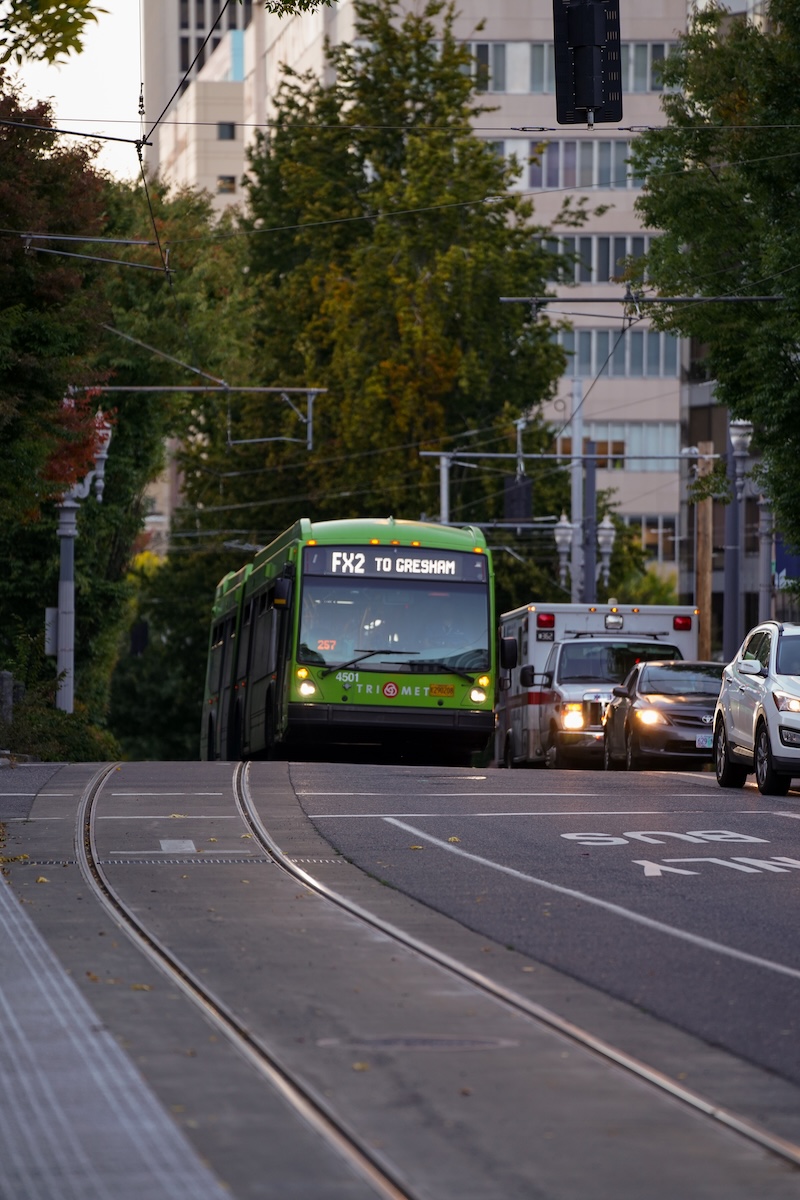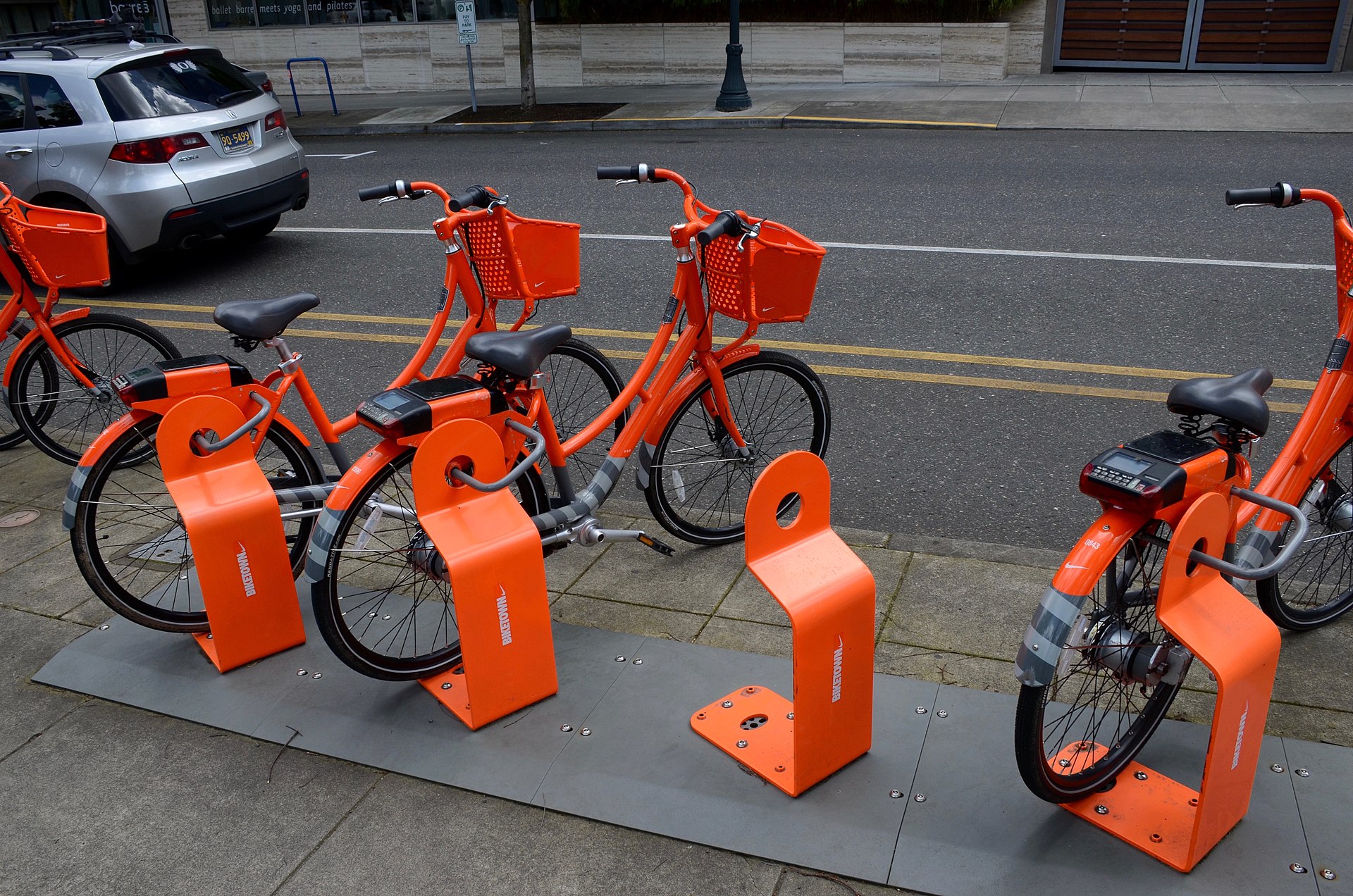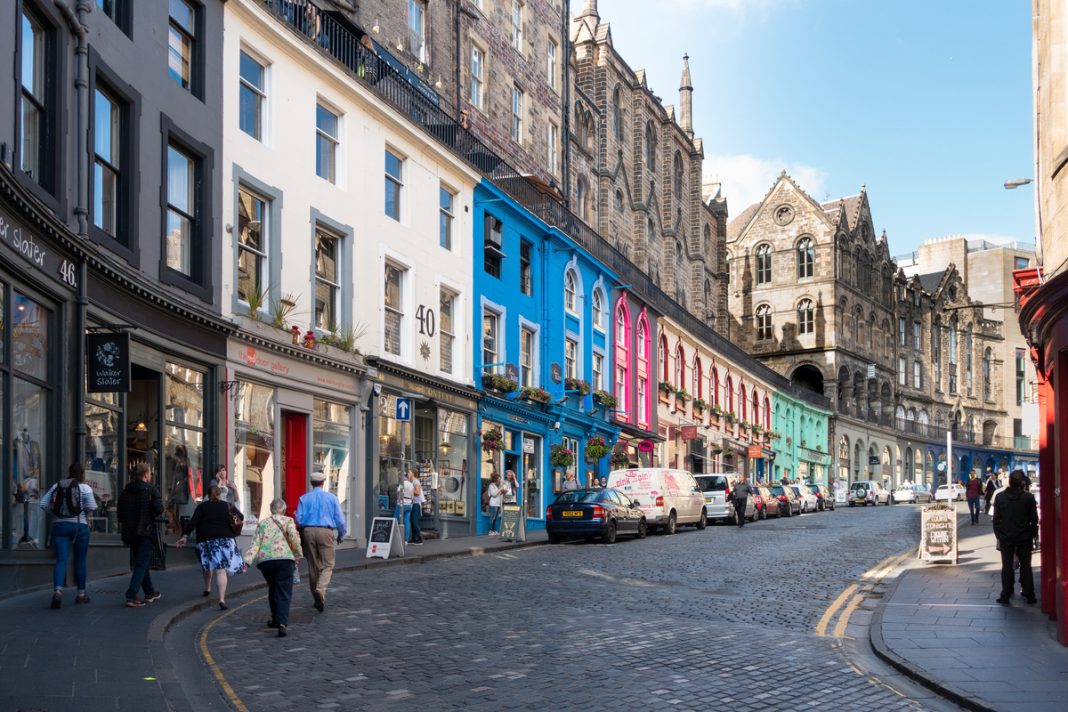Portland’s public transit system is—relatively speaking—pretty good. Portlanders took just under 43 million rides on TriMet in the 2022 fiscal year, according to TriMet ridership statistics. While Portland’s public transit system doesn’t make the top-10 list in the United States, it’s certainly better than many other cities.
However, it could be better. Ridership has steeply declined since 2020. It dipped from 1.83 million weekly rides in Jan. 2020, to just over 600,000 in May 2020 and only recovered to 1.2 million as of July 2023, according to TriMet.
Cars are a disaster for both the environment and city planning, and it’s in our best interest to move as many people as possible away from cars and onto public transit.
One change TriMet could make to increase ridership is eliminating transit fares. Per CNN, cities from Kansas City, MO, to Olympia, WA, to Boston have tested fare-free transit. This removes a financial barrier for low-income riders and reduces boarding times. Portland can and should follow in their footsteps.
Removing fares in Portland would require more government investment in transit to compensate for the funding gap. However, the return on investment would be worth it.
Besides getting more people on TriMet, it would redistribute the regressive burden of fares on lower-income riders to funding from the general population, increasing social investment in public transit.
Another broader transportation problem is intercity transit to and from Portland, especially along the PNW Corridor—a 466-mile high-speed rail corridor which runs from Eugene, OR, to Seattle.
High-speed rail has long been a dream in the U.S., but besides Amtrak’s East Coast Acela train, there has thus far been a disappointing lack of high-speed trains on American rails.
Thankfully, many high-speed rail projects are proposed across the country, including the hypothetical Cascadia line, according to the Washington Post. The proposed train line—which has support from Microsoft in a possible public-private partnership—would connect Portland to Seattle and Vancouver, Canada, with trains running at up to 250 mph.
A June 2023 report by the Washington State Department of Transportation (WSDOT) and submitted to the Washington State Legislature and Governor Jay Inslee on the study of high-speed rail in the region fleshed out the idea. It submitted two applications for federal funding.
“A stronger, better connected economic megaregion — stretching from greater Vancouver, British Columbia to metro Seattle, Washington to Portland, Oregon — has the potential to thrive in the global marketplace,” WSDOT stated. “A key component of that vision is a fast, frequent, reliable and environmentally responsible transportation system that unites this Cascadia megaregion, and positions it for global competitiveness and future prosperity.”
According to the Kleinman Center for Energy Policy at the University of Pennsylvania, replacing domestic flights with rail journeys reduces emissions. In one example trip from Philadelphia to Los Angeles, traveling by rail reduced carbon dioxide emissions by 37% compared to a direct flight.
Reducing short-distance flights and replacing them with more efficient trains could majorly impact greenhouse-gas emissions in the PNW considering the closeness of Portland, Seattle and Vancouver. That’s not even considering the passenger impact. Trains are far more convenient and far less stressful than planes, but their reduced speed makes them less attractive for many.
Consider the commute from Portland to Seattle. According to Google Maps, driving from the former to the latter via Interstate 5 takes just under three hours. The Amtrak Cascades—the current train route which services the two cities—takes around three hours and 25 minutes. On the other hand, a direct flight clocks in at just under an hour.
However, a flight has plenty of difficulties along the way. You need to make your way to an airport, which is often hard to get to. You have to deal with airport security before you get to your gate. On a short-distance flight like Portland to Seattle, the time eaten up by airport commute and security delays could make a flight nearly as slow as a car ride.
Now, imagine a high-speed train which travels between Portland and Seattle in the same time it takes a plane, but without the hassles of a flight. And trains have wide seats, scenic views and a spacious interior. Imagine entering the train station ten minutes before your train leaves and walking straight onto the platform without security delays. This future—as fantastical as it may seem—is possible if only Oregon, Washington and the federal government work to make it a reality.






